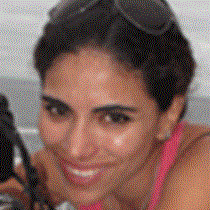We had a long but smooth navigation last night over the northern end of Isabela Island and crossed the equator line twice; into the northern hemisphere around midnight and in the wee hours of the morning back into the southern hemisphere. Just before dawn we dropped anchor off a long beach called Espumilla on Santiago Island. Waves were rolling onto the beach and washing away the tracks of the sea turtles that had spent the night nesting here. Green sea turtles dig nest holes and deposit as many as 60-80 eggs in the sand and these incubate under the warm tropical sun for approximately two months. When the hatchlings emerge they rush down the beach and swim away, trying mightily to avoid all the hungry predators that would like to eat them.
This morning we went out before breakfast. The kayakers disembarked first with guide Juan Carlos and panguero Ricky to help them into their boats. Almost everyone got into their kayak successfully (Will flipped over and got soaked but took the chilly dip with extremely good humor) and then off they paddled along the dramatic cliffs to reach Buccaneer Cove. Jonathan took a group of hikers in and they followed a trail into a mangrove forest and then up a rocky ridge and through a forest of big, old palo santo trees. On the beach Aura and her small group photographed a juvenile hawk and all of us watched a pair of mating sea turtles struggling in the surf.
We ate a hearty breakfast and after an hour of down time we chose between snorkeling or a Zodiac cruise. The snorkelers found an eagle ray, sea lions, several white-tipped reef sharks, a free swimming moray eel and many, schooling fish. Some of us swam into a cave and all of us thoroughly enjoyed the warmer waters this morning. Those who went out with Jonathan in the Zodiac motored along the coast admiring the sculpted reddish cinder rocks and spying various sea birds roosting along the cliffs.
This afternoon following our much appreciated siesta, I gave a presentation on Charles Darwin. No one was aware that Charles Darwin and Abraham Lincoln were born on the exact same day: February 12, 1809. I enjoy speaking about Darwin’s life and in particular about his visit to Galapagos. He spent nine days camping on Santiago Island very near where we were visiting this morning.
The afternoon’s hike began with a rough wet landing on a black sand beach. As instructed our guests all had their cameras protected from splash and spray and everyone made it to shore mostly dry. We hikes inland at first and then along a beautiful coast line of flooded lava tubes and small sandy beaches. Shore birds were numerous here: plovers, oyster catchers (apparently thinking of nesting because they seemed to be excavating a nest hole) sanderlings and turnstones. And there were several mother and baby sea lion pairs snuggled together among the rocks. Just off shore a sea lion was eating a fish it had captured. At least a dozen frigate birds fluttered and dove in, hoping to steal a bit of the sea lion’s hard-earned meal for their own dinner.
The afternoon temperature was perfect: neither too hot not too cool. The sunset behind the volcanoes of Isabela to the west and we returned to the National Geographic Islander with smiling faces and many photos newly added to our memory cards. Yet another amazing day in the magical Islas Galapagos!









